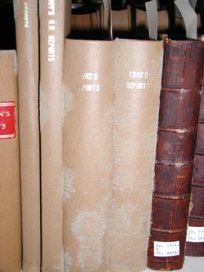Thursday, March 5, 2009
 Over the past few days, I have received several inquiries on how to deal with mold on books or magazines. Here are some tips.
Over the past few days, I have received several inquiries on how to deal with mold on books or magazines. Here are some tips.
The items need to be dry before working on them. Set them out somewhere away from people (I use my garage), to let the items dry. If the pages are damp, you may need to interleaf the pages with paper towels or copy paper (paper without any print). Once the items are dry you can start cleaning. You don’t need to use any disinfectants. Lightly dust mold off with a clean paint brush. If there is some stubborn mold you can try a damp cloth or sponge and gently wipe. Or, better yet, a non chemical natural sponge – usually advertised as a sponge for cleaning off soot. The sponge might be called absorene or dirt eraser. You should be able to get the sponge in a hardware store. You need to be careful not to erase the print! Mold can leave stains and those won’t come out. You’ll need to be careful that you are not trying to rub out a stain – you’ll just rub a hole in the page.
THE MOST IMPORTANT THING IS GUARDING PERSONAL HEALTH. Here’s what I recommend:
Wash hands frequently whenever handling material with mold. Monitor your own heath.
Mold spores enter the body by inhalation and through small breaks in the skin. It is impossible to determine ahead of time who will or will not be affected by exposure to mold. The best safeguard is to exercise appropriate precautions whenever there is an exposure to mold. The following safety precautions are recommended.
* Wear a N95 disposable respirator available in the Conservation Lab
* Use disposable gloves if handling the material
* Goggles or protective eyewear should be worn
* Don’t touch your eyes or mouth if you’ve touched a moldy item
* Wash your hands as soon as possible once vacated infected area
* Take a shower and wash your clothes in hot water and bleach
Illnesses due to exposure to mold can result from both high level, short-term exposures and lower level, long-term exposures.
The most common symptoms to exposures are runny nose, eye irritation, cough, congestion, aggravation of asthma, headache, and fatigue. Also, regardless of the species present, individuals with serious allergies, diabetes, asthma, respiratory problems, or compromised immune systems, as well as those taking steroid therapy, should avoid the affected area and materials.
Call your local conservation lab or preservation librarian for additional assistance. The can advise you as to whether you need a professional and how to obtain one. Or they can walk you through the steps.